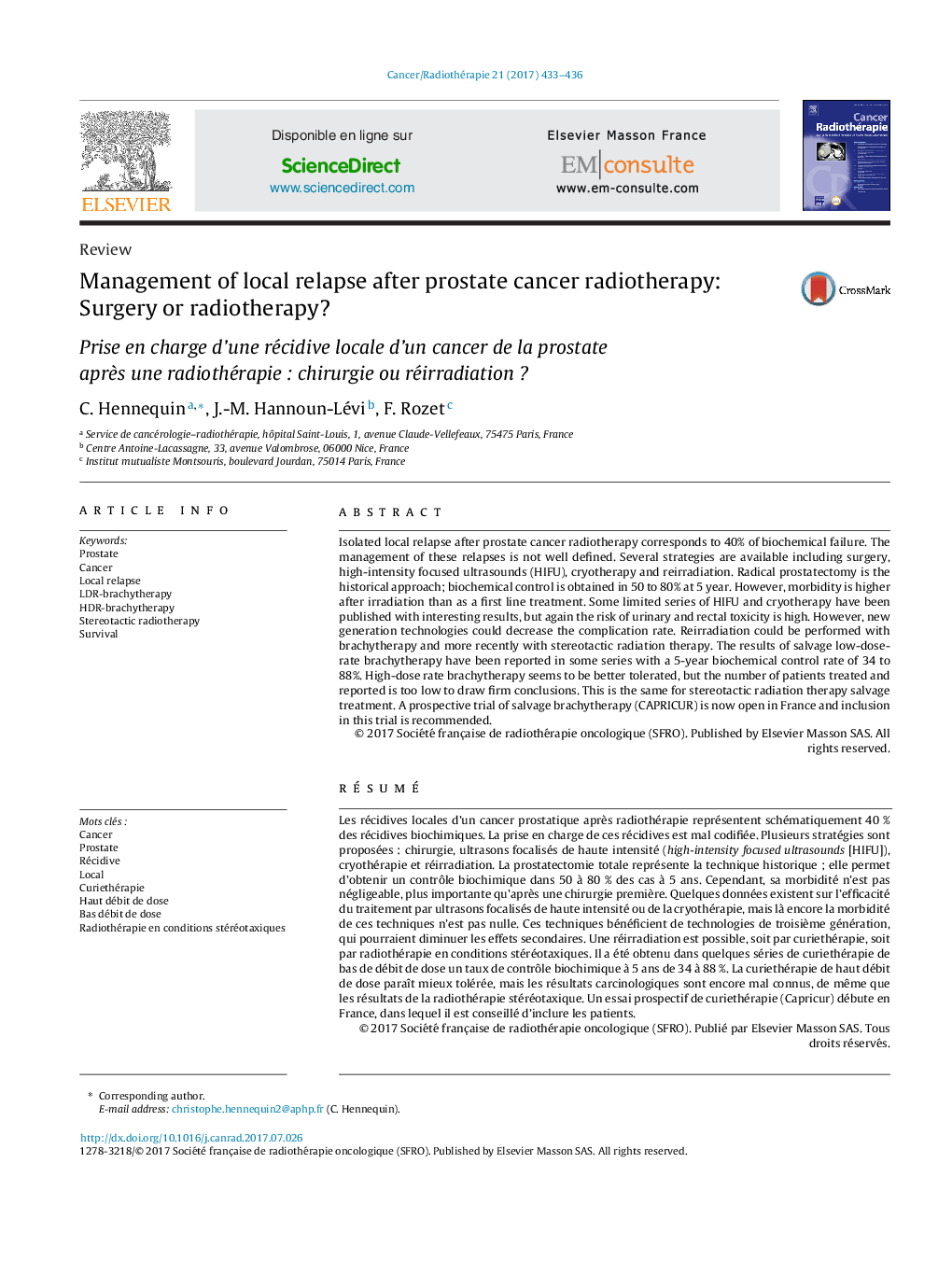| Article ID | Journal | Published Year | Pages | File Type |
|---|---|---|---|---|
| 5525755 | Cancer/Radiothérapie | 2017 | 4 Pages |
Isolated local relapse after prostate cancer radiotherapy corresponds to 40% of biochemical failure. The management of these relapses is not well defined. Several strategies are available including surgery, high-intensity focused ultrasounds (HIFU), cryotherapy and reirradiation. Radical prostatectomy is the historical approach; biochemical control is obtained in 50 to 80% at 5Â year. However, morbidity is higher after irradiation than as a first line treatment. Some limited series of HIFU and cryotherapy have been published with interesting results, but again the risk of urinary and rectal toxicity is high. However, new generation technologies could decrease the complication rate. Reirradiation could be performed with brachytherapy and more recently with stereotactic radiation therapy. The results of salvage low-dose-rate brachytherapy have been reported in some series with a 5-year biochemical control rate of 34 to 88%. High-dose rate brachytherapy seems to be better tolerated, but the number of patients treated and reported is too low to draw firm conclusions. This is the same for stereotactic radiation therapy salvage treatment. A prospective trial of salvage brachytherapy (CAPRICUR) is now open in France and inclusion in this trial is recommended.
RésuméLes récidives locales d'un cancer prostatique après radiothérapie représentent schématiquement 40 % des récidives biochimiques. La prise en charge de ces récidives est mal codifiée. Plusieurs stratégies sont proposées : chirurgie, ultrasons focalisés de haute intensité (high-intensity focused ultrasounds [HIFU]), cryothérapie et réirradiation. La prostatectomie totale représente la technique historique ; elle permet d'obtenir un contrôle biochimique dans 50 à 80 % des cas à 5 ans. Cependant, sa morbidité n'est pas négligeable, plus importante qu'après une chirurgie première. Quelques données existent sur l'efficacité du traitement par ultrasons focalisés de haute intensité ou de la cryothérapie, mais là encore la morbidité de ces techniques n'est pas nulle. Ces techniques bénéficient de technologies de troisième génération, qui pourraient diminuer les effets secondaires. Une réirradiation est possible, soit par curiethérapie, soit par radiothérapie en conditions stéréotaxiques. Il a été obtenu dans quelques séries de curiethérapie de bas de débit de dose un taux de contrôle biochimique à 5 ans de 34 à 88 %. La curiethérapie de haut débit de dose paraît mieux tolérée, mais les résultats carcinologiques sont encore mal connus, de même que les résultats de la radiothérapie stéréotaxique. Un essai prospectif de curiethérapie (Capricur) débute en France, dans lequel il est conseillé d'inclure les patients.
